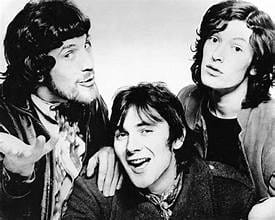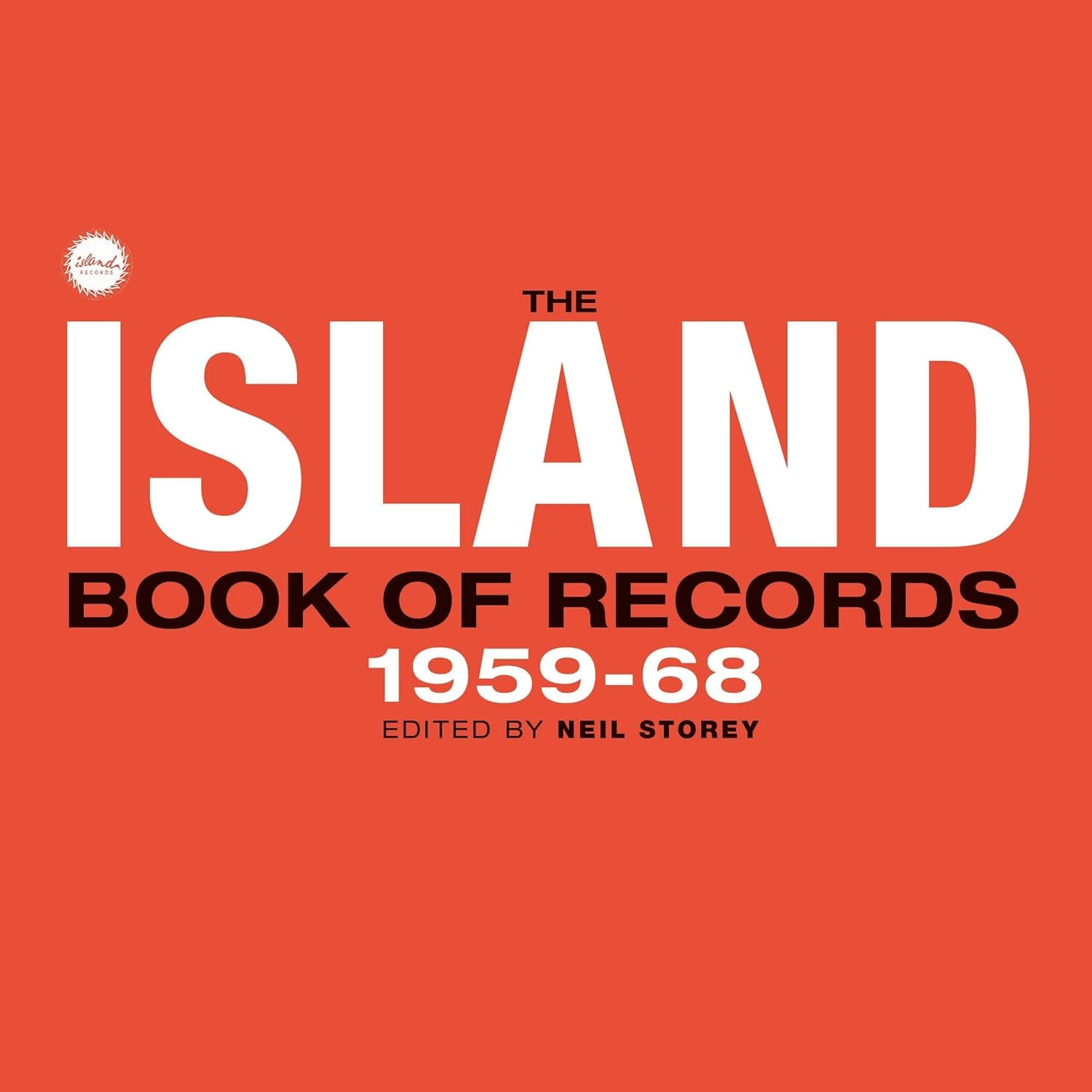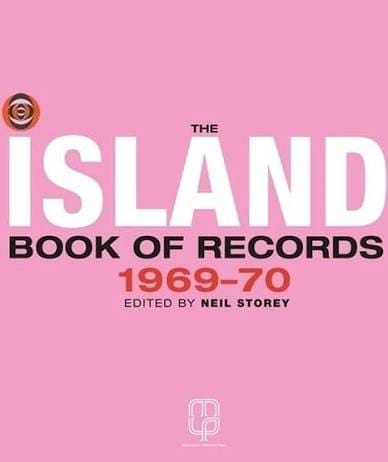Growing Up Island--The Island Book of Records Will Take You There

There were three men came out of the West
Their fortunes for to try
And these three men made a solemn vow
John Barleycorn must die…
Traditional, from the song (and album of the same name by) Traffic
When the above song and album made the transatlantic move from being a U.K. sensation to broadly celebrated (but still cultish) in the U.S. in the early autumn of 1970, Island Records founder and head Chris Blackwell notes that “The “Barleycorn” album was the first big breakthrough. FM radio was coming in and that helped us a lot…albums like this helped us establish an identity as a label. We’d already had that in England, “Barleycorn” was one of those the records that helped establish that identity overseas.”
“I’m digging into the past to try and find those simple truths which still make sense.”
Stevie Winwood to Record Mirror,” September 5, 1970.
Bakckwell’s quote above is to be found in the resource I am here to laud today, namely a lovely pair of coffee-table-scale doorstops—more like door-openers, truly--known as “The Island Book of Records, Volumes 1 and 2.”
In discovering what a gift to posterity these two volumes are, at 800-plus pages in toto with more editions to come, my accompanying thought was how they update with humbler intent the European illustrated manuscript tradition, which also was a laborious but important means of chronicling fast-disappearing times. This brand of artistry which has its roots in such storied, handcrafted works as the Book of Kells, is richly and newly evoked in such coffee table treasures as the Island books. A kaleidoscopic two-volume tapestry spanning (thus far) 1959-1970 in pop music history, it’s a seemingly immense labor that Neil and a tight cadre of colleagues have stuffed with evocative art in the form of photos, handbills, and skeins of reflective quotes from those who were there. Perhaps the richest memory-stirring of all comes in the form the near-bewildering variety of album covers, many full-size in the same 12”x12” format of the glory-days LP sleeves.

The visuals, which take good advantage of some classic gatefold formats, strive to be as colorful if not as intricate as the Book of Kells pages, created around 800 A.D., that also featured rich hues. These colors the monk scribes and artists as sourced inventively--yellow pigments from volcanoes in Italy, blue shades from lapis lazuli, verdigris, indigo, red lead.
Uncut is among the British outlets that issued praise: “Neil Storey has once again delved into his impressive archive of record sleeves, gig posters and press cuttings to curate The Island Book of Records Volume 2, covering the years 1969-70: Blind Faith, Fairport, Free and all kinds of hairy goodness.” (Any doubts about the latter phrase, have a look at the unearthed photo of Free from the gatefold of the German edition of the band’s 1970 “Highway” album. Have a look at those, er, pretty things, and then quickly lock up your daughters.)
“Highway” was a quick follow-up to the band’s “Fire and Water” album that contained two Paul Rodgers co-written classics, the title song and the jukebox essential “All Right Now”.
A useful summation comes from sometime Island staffer Bob Bell on the Martin Hesp lifestyle site: “The IBOR books needed to be written because, quite simply, a musical generation is dying right before our eyes. Not just the major-generals but the foot-soldiers, too. There is a direct consequence of this not being done – because if the recollections of those who were there, on the front line at the time, aren't collected then future generations will end up relying on... second-hand information at best.”
Anyone who has had even just a passing interest in popular music during the second half of the 20th century cannot fail to be aware of Island Records. From its beginnings in marketing Jamaican music in the UK, and then to Europe, and ultimately the entire world - think Bob Marley, Desmond Dekker, Toots and The Maytals, Jimmy Cliff and countless others, to waving the flag for progressive rock as exemplified by Traffic, Jethro Tull, King Crimson, Cat Stevens, [early Brit group] Nirvana, Spooky Tooth, Fairport Convention, Mott The Hoople and so on, the label very quickly achieved iconic status, and by the end of the sixties was the preferred and very much desired home for any self-respecting band.”
Under Blackwell’s visionary (if slyly casual) stewardship, the label had a wide palette of enthusiasms, from early immersion in emerging ska and other Jamaican fare (thus the pop hit, Millie Small’s “My Boy Lollipop,”) and the book’s great virtue is not any dedication to linearity but rather a willingness to chase down the musical and chart highlights and feast on both with equal commitment, all in a savvy busily leapfrogging chronology.
This writer dove all the way in, per Blackwell’s sage reading of the Brit-hipsters invasion, with that “Barleycorn” album. I can see it leaning against the bookshelf, the cover showing a simple stalk of barley. Per Winwood’s thought above, but with a dose of “because we felt like it,” the ancient, melodic chestnut with theorized pagan roots (on its face an account of making barley into booze) helped make the record a one-disk folk movement, further enforced by seeker’s political awareness as shown with "Freedom Rider”. In a ground game of tour gigging that helped break the band in America, the then-trio thta was Traffic would segue from the anthemic “Glad’ to that song, and also include Winwood’s highly personal “Stranger To Himself.” As Penny Massot, Winwood’s companion of the epoch as well as an Island staffer, puts it to the ever-inquisitive Storey, “On their night, the three-piece Traffic (Winwood, Jim Capaldi, and flautist Chris Wood] were untouchable.”
Traffic at Santa Monica Civic Center. 2/21/72:
https://www.youtube.com/watch?v=93mv8LPtmro
Indeed, Traffic was in great part the go-to soundtrack to for my own coming of age, and not lest for the “Last Exit” album of May, 1969. Having forsworn Medieval History (weekly quizzes!), I had found a course in, wait for it, Post-Modernity, and the thought arose to create my thesis, as a quick, imaginative (so I assured myself) film.
The ”Last Exit” album boasted just six songs, the longest being the 10:50 concert version of Winwood’s wonderfully bel canto take (live at Fillmore West) of “Feelin’ Good,” plucked from the musical “The Roar of the Greasepaint.”
My short subject got made using varied `significant’ oddments e.g., (a 50’ plastic Indian who stoofdover a used--car lot), random things I’d been shooting on my Bolex Super 8 film camera. These were edited into an assemblage could exploit Stevie’s soaring, bel canto vocals as he carried the day.
It would be a year later, after Joni Mitchell’s “Blue” album arrived, that the Traffic disk and its close cousin “Barleycorn” would be replaced by Joni in the heaviest rotation on my department-store stereo. (I herewith apologize to the many great bands whose meticulous recordings I reviewed using that machine, besieged by dust motes and tough on vinyl.)
Add five more years and, as arranged partly via long distance calls to Island UK featuring Neil and his co-equal head of PR Rob Partridge, I would embark on a Continent-hop tour with Bob Marley and the Wailers. And four years after that, came another call from Neil, and soon I was on another flight to London to interview Island mainstay Robert Palmer, a year after “Bad Case” had been an American hit. I remember him as a congenial gent—he died of a reported heart attack in 2003 at age 54 during a trip to Paris—but the surprise was that Neil picked me up and kidnapped me, as we jokingly refer to the event, to dash off and see the label’s new “baby band” from Dublin .
Yeah, that band. I was quite taken with them, jet lag or no, more so than the perhaps 75 kids who had turned up in a small college auditorium—or was it a lunchroom?—in Southampton about 70 miles from London.
Their debut album, “Boy,” hadn’t yet been released, but soon would be, and by the time I next met them in Dublin, they were already a big deal. By some career trigonometry, that early meeting—“you were certainly the first American writer to see them,” Neil assures me—molded over time in a professional friendship with the band and manager Paul McGuinness.

So, in sum, thanks Neil for it all, and now get back to work on those remaining volumes that will transport us all through the year of U2, Marley and so much else that closed out in 1989 when Chris Blackwell sold the company Phonogram. It’s been a great, contrarian run--and now we have in in what my fellow music trainspotters will surely embrace as a big helping of glorious detail.


Comments ()